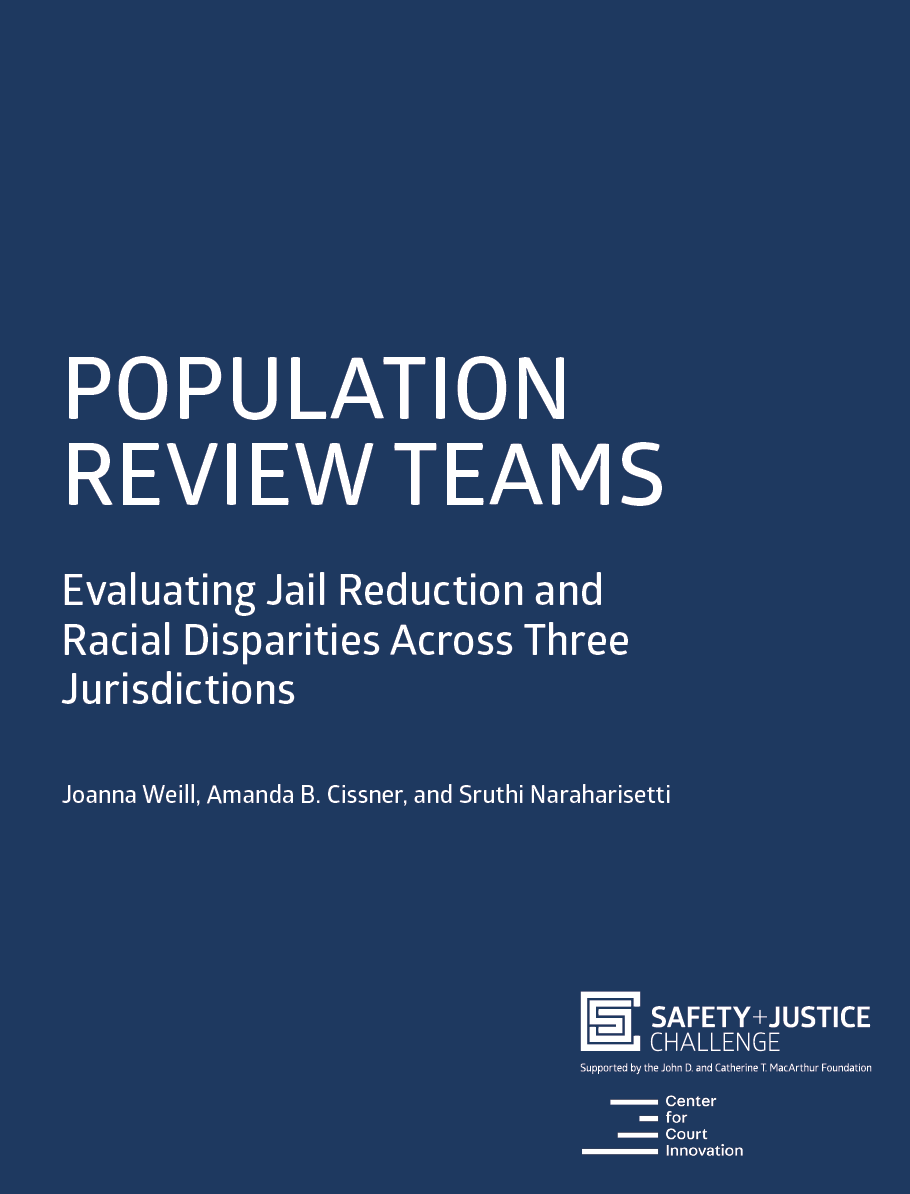Report
Costs Featured Jurisdictions Racial Disparities April 26, 2022
Population Review Teams: Evaluating Jail Reduction and Racial Disparities Across Three Jurisdictions
Nearly one-third of those incarcerated across the U.S. are held in local jails, mostly held during the pretrial period, before they have been convicted of any crime. Among those detained in local jails, Black individuals are disproportionately represented, making up more than a third of the jail population in 2019.
Within this context of a national overreliance on jail, the John D. and Catherine T. MacArthur Foundation launched the Safety and Justice Challenge (SJC) in 2015. This effort supports local jurisdictions across the country in their search for safe and effective ways to reduce jail populations and eliminate racial and ethnic disparities.
Currently implemented in more than a dozen cities around the country, jail Population Review Teams (PRTs) are one strategy to reduce jail populations. Funded by the SJC and with guidance from ISLG, the Center for Court Innovation conducted a quantitative research study of the PRT model and its impacts in three sites through the spring of 2020: Lucas County, Ohio; Pima County, Arizona; and St. Louis County, Missouri. Although the sites did not design their PRTs to explicitly reduce racial disparities, this project helps them to measure the impact of PRTs and continue to work toward disparity reduction.
The analysis found:
- A small impact on the jail population: Ultimately, the PRTs examined resulted in the release of a small proportion of the total jail population during the study period.
- A larger impact, once a case is reviewed: For cases that make it to actual review by the PRT, about half go on to be released.
- PRTs can increase disparities: In St. Louis County, White individuals are more likely than Black individuals to be eligible and recommended by the PRT.
- Small disparity reduction at early PRT stages is not enough: In Lucas and Pima Counties, Black individuals were slightly more likely than White individuals to be eligible for the PRT, but these differences were not sustained past the eligibility stage.
Together, the findings across the three sites suggest that a jail reduction strategy is unlikely to reduce racial disparities if it does not explicitly consider race during the development of program policies. In addition, the PRTs included here impacted a small percentage of the overall jail population. However, feedback from the sites suggests that as a supplement to other local efforts or a driver of broad policy change, the PRT model shows promise in building collaboration, engaging local stakeholders across the system in meaningful discussion about overreliance on jail, and shining a light on potential areas for future efforts.
